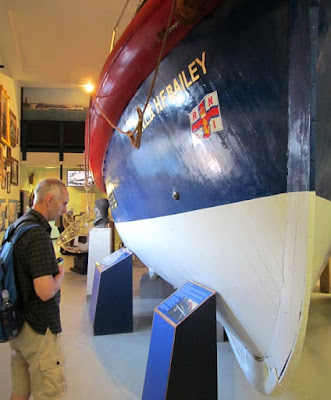Nevil Shute's 1928 novel So Disdained (published as The Mysterious Aviator in the United States), gives us a view of life in England after World War I. On a rainy night, Moran is driving his Morris automobile down an isolated country road when he spies a solitary figure trudging along. He invites him into his car, and as it is late, takes him back to his cottage rented to him by the local lord of the manor. Moran discovers the man is a fellow Royal Air Force pilot he flew with during WWI. While Moran left flying to act as a business agent for the lord of the manor, this other man, Lenden, has been flying for a living since the war.
Lenden has had an up-and-down career since WWI, as aviation was in its infancy in that era. At times he's worked as a mail carrier, or did survey missions in other countries. But each time, the venture hit trouble, and what seemed like a sure thing faltered. This forced him to send his wife away to live with her family, and sent him searching for another flying job that offered enough security for him to afford an apartment or a home in which they could comfortably live. But whatever he tried, it only worked well for a time, and soon he had to send her back to her family again, while he...
One of the jobs Lenden enjoyed, but could never make pay, was giving holiday makers short flights. He and his partners, all former RAF pilots, would travel to seaside towns all over England, such as Brighton or Cromer, and charge money for a ten minute flight. As he recounts to Moran, one of Lenden's first ventures started immediately after WWI, in 1919. He and his partners bought an Avro seaplane and used it to take tourists for a quick ten minute flight. The flight itself wasn't the problem, it was getting on- and offshore. The process of landing on the water, getting ashore, loading and unloading passengers, just too too much time to make the venture profitable.
Having spent a week in and around Cromer last year, I can understand some of the trouble Lenden might encounter. One of the town's claims to fame is a Life Boat Museum. The building is packed with photos, memorabilia, and even an old ship. There visitors learn how their local version of a Coast Guard has saved the lives of countless unfortunates who got into trouble at sea.
 |
| Inside the Cromer Lifeboat Museum |
On our first day in Cromer, we found a bench by the sea and sat down to eat our lunch. Even though it was sunny, we needed a jacket to ward off the cool breeze. I had to set my can of soda between my legs, or it would blow over. I had to cradle my arm around what little food I had on my lap, and place our backpacks and other items nearby, to keep the wind from blowing away our food. Still, an unexpected gust of wind was liable to blow away a small item of food, or send my napkins fluttering off.
Even though it was a summer month, when tourists could pack the town on a weekend, it was always windy there. Wooden walls act as dividers lining the beach, to combat beach erosion from strong tides. Tractors lined the beach, awaiting the need to tow a boat over the hard shingle, to either launch it into the water, or reclaim the vessel from the breaking surf.
It's hard to imagine navigating a small seaplane on and off such a windswept beach. It's even harder to imagine a small seaplane parked on the beach. I imagine, unless it was tied down securely, it would blow over or away. Given the construction methods and materials of such small planes one hundred years ago, storm winds might well have ripped apart the best secured airplanes.
Then again, given modern safety restrictions, and society's readiness to serve a lawsuit against anyone for any perceived wrong, I wonder if such seaside tourist flights could even be offered today. If they were, I wonder if they'd be any more profitable than Lenden's.
Dragon Dave


No comments:
Post a Comment